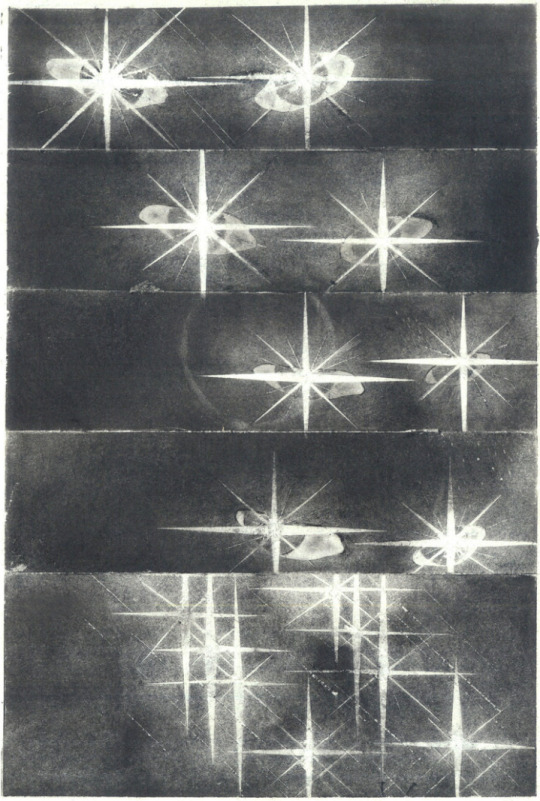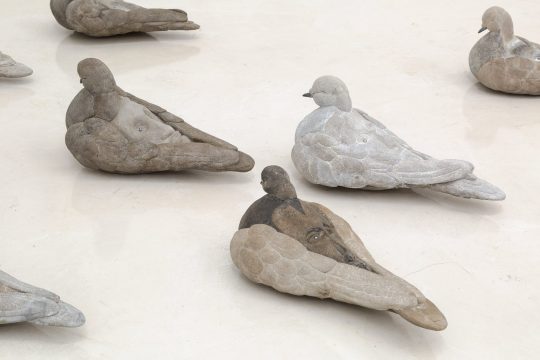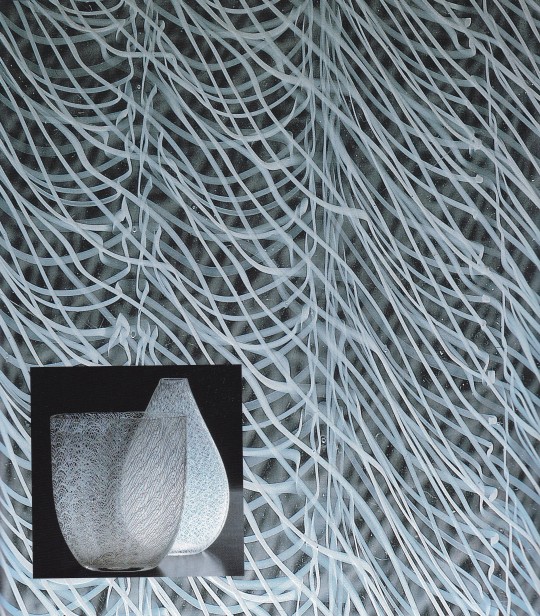#licata
Photo

You can do politics and protest in a thousand ways. I sing. But I’m not a singer...I’m different. Let’s say, I’m an activist who makes rallies with the guitar.
Rosa on herself [my translation]
Rosa Balistreri was born on March 21st, 1927 in Licata (in the province of Agrigento) from a poor (and also alcoholic and often violent) carpenter and a housewife. She had two sisters, Mariannina and Maria, and a brother, Vincenzo (paraplegic since birth).
Since she was a young child, Rosa had to work to help support her family. She worked as a maid with wealthy families, preserved fish, and gleaned the fields of nearby villages during summer. Singing was her only enjoyment, and soon her raspy and passionate voice started to be appreciated, to the point she was hired to sing during wedding and baptism celebrations.
Around 15-16 years old, she was married to Gioacchino Torregrossa, called Iachinazzu and whom she will later describe as “latru, jucaturi e ‘mbriacuni” (thief, gambler and alcoholic). From this marriage, a daughter, Angela, was born. True to the description his wife gave of him, at some point Iachinazzu bet his daughter’s dowry and lost it. This event must have been for Rosa the last straw, so once she found out, the enraged and desperate woman stabbed her husband with a knife. Thinking she had killed him, she turned herself to the Carabinieri. As it turned out, Iachinazzu had just been severely wounded, so Rosa was only sentenced six months.
Once she served her time, she started working as a peddler, until she left her husband and moved to Palermo together with her daughter. In Palermo, she worked as a maid for a noble family. She was able to send her daughter to boarding school, while she learnt to read and write. Everything seemed to go well until the family’s young son seduced Rosa and got her pregnant. With the (false) promise of marrying her, he convinced her to steal money from his parents. Unfortunately for her, Rosa was discovered and ran away. She was nonetheless arrested and sentenced seven months. When her time was served, she was forced to live on the street until a midwife friend took her in and helped her give birth to a stillborn son.
Thanks to the intervention of Earl Testa, Rosa was employed as keeper cum sacristan of the Church of Santa Maria degli Agonizzanti, Palermo. For a while, she lived in the sacristy’s basement together with her brother Vincenzo, until the priest attempted to assault her. The woman took revenge by stealing the church’s alms-giving and with the money, she bought two tickets for Firenze, one for her and the other for her brother.
In Firenze, Vincenzo started working as a shoemaker while she resumed her job as a maid for upper-class families. The siblings were soon joined by their sister Mariannina, and their mother. The other sister, Maria (together with her children), joined them later, following a terrible fight with her violent husband. Unfortunately for Maria, her husband followed her and, once he found his wife, he killed her. Maria’s death was a huge blow to Rosa’s family, their distraught father was so desperate he hanged himself.
In the meantime, Rosa had started a relationship with Florentine painter Manfredi Lombardi. Through him, she managed to get introduced to artistic figures like Genoese art critic Mario De Michele (who allowed her to record her first album), Sicilian poet Ignazio Buttitta (who suggested that she learnt how to play the guitar and helped her with the songwriting and the composition of the music tracks), or 1997 Nobel Prize winner Dario Fo (who hosted her in the first two editions of his theatrical show Ci ragiono e canto).
Eventually, her decade-long relationship with Lombardi would end after he dumped her for a model, causing Rosa to fall into depression and attempt to kill herself. To make things worse, her daughter Angela had abandoned boarding school because she found herself pregnant and now Rosa had to provide also for her. To her rescue came her friends from the Italian Communist Party (PCI) who allowed her to perform during the various Feste de l’Unità the Party organized in various Italian cities.
She returned to Sicily at the beginning of 1970s. No longer an unknown Sicilian émigré, she came back as an accomplished artist. In 1973 her song Terra che non senti was disqualified during the XXIII edition of Sanremo Music Festival. The disqualification occurs after the RAI denounces the song via telegram as not being an unreleased track, prompting various controversies since it seemed like the real reason Rosa was banned was that the RAI was afraid that she (a known activist with Communist ideals) might use the Festival to make some dangerous social statement in front of 30 millions of viewers. By many, she’s considered the moral winner of the XXIII edition.
In Palermo she kept singing and playing in the Teatro Biondo, as well as touring the world, performing among other in Sweden, Germany, and the USA and always being celebrated.
While in tournée in Calabria, Rosa suffered from a stroke. She was hospitalised in Palermo, in Villa Sofia Hospital, where she died on September 20th 1990, although later buried in Trespiano, near Firenze. She was 63.
Rosa’s voice, her strangled singing, dramatic, anguished, sounded as if it came from Sicily’s parched earth. I got the impression of having always known her, to have seen her being born and heard her throughout my whole life: child, shoeless, poor, woman, mother, Because Rosa Balistreri is a fantastic character, I’d say a drama, a novel, a faceless movie.
Ignazio Buttitta [my translation]
Sources
Balarm, Sanremo 1973: la grande assente Rosa Balistreri, esclusa con "Terra che non senti"
Cascio Franco, Quella volta che Rosa Balistreri fu esclusa dal Festival di Sanremo
Grasso Mario, Rosa Balistreri, la cantautrice siciliana che ha vinto contro ogni mala fortuna
Meli Cristina, Rosa Balistreri, la prima cantautrice e cantastorie donna italiana
PalermoViva, Rosa Balistreri Canta e Cunta
Providenti Giovanna, Rosa Balistreri
youtube
#women#historicwomendaily#women in history#history#historical women#rosa balistreri#ignazio buttitta#palermo#province of palermo#licata#Province of Agrigento#contemporary sicily#people of sicily#women of sicily#myedit#historyedit
29 notes
·
View notes
Text

[Licata’s free hand clapped over his gaping mouth.]
6 notes
·
View notes
Video
undefined
tumblr
Licata’s free hand clapped over his gaping mouth. He slowly lowered it back as he let out a gasp of pain, he didn't want the pain to last too long, and the pain had already left his entire body. As the pain took hold, he began to tremble with every step that continued.
2 notes
·
View notes
Text
Licata 11 luglio 1943, l'estremo sacrificio del generale dalla Milizia Enrico Francisci
Il 12 luglio 1943 venne ritrovato sulle spiagge di Licata il corpo decapitato del generale Enrico Francisci morto il giorno precedente, nel corso del contrattacco alle truppe americane sbarcate nella zona. Il 10 luglio 1943, l’ufficiale della Milizia Volonatria per la Sicurezza Nazionale era stato incaricato dal generale di corpo d’Armata Alfredo Guzzoni, comandante delle truppe dell’Asse in…
#11 luglio 1943#Alfredo Guzzoni#Divisione Herman Goring#Enrico Francisci#Guerra d&039;Etiopia#Guerra di Spagna#Licata#Milizia Volontaria per la Sicurezza Nazionale#Raggruppamento CC.NN. "23 Marzo"#Sbarco in Sicilia
0 notes
Photo

Santiago Licata (Argentine, b. 1986)
Untitled, 2019
Graphite grease on paper
18K notes
·
View notes
Photo


Santiago Licata, UNA MONEDA, PASTO Galería, 2022
5K notes
·
View notes
Photo

Tertre vivant by François Licata
5K notes
·
View notes
Text

sin titulo by santiago licata, 2019, graphite grease on paper, 29 × 21 centimeters
72 notes
·
View notes
Photo

Riccardo Licata (Italian, 1929-2014), Composition, 1993. Mixed media on canvas, 66 x 66 cm.
150 notes
·
View notes
Text
“At times, the ground will fall away from underneath us and we’re unable to find the center. It’s the death of an old dream, of me and my life and how I was so sure it was supposed to turn out.
In these moments, we’re asked to place the entirety of our unlived life on an altar in front of us, and help the shattered soul-pieces to find their way into the next world.
Despite the temptation to prematurely transform, transcend, or rise above the material in the vessel, the invitation is by way of descent – into the body temple, to provide sanctuary and safe passage in which the grief can be alchemized, felt, and integrated.
This grieving unveils a process that the alchemists called the solutio, symbolized by salt and the flowing of tears – physical tears in the eyes and also tears of the subtle body, an aching, burning, and longing deep within the soul, weeping for union.
It’s so easy to conclude in these moments that something has gone wrong, that we’re not okay, and that we’ve been forsaken. This psychic groove is the legacy of familial, cultural, and intergenerational networks of trauma and wounding in attachment, held in in the somatic unconscious.
In moments when the figures of the unlived and unfelt arise within us, the neural network opens, is supple, porous, and becomes translucent and permeable, evidence of its own yearning to be re-encoded.
It is love that is the great re-encoder.
In order to break through the density of habitual consciousness and tangles in the soma, the subtle body, the soul must at times upset and dissolve the psychic status quo.
By turning inside out the dreams and fantasies of me and the life I thought I was living, we are taken into an open field where for just a moment we might be given a glimpse behind the veil, at what’s truly happening here and the intelligence which is orchestrating it.”
- Matt Licata
Photo: catching the light, Southern Finland

4 notes
·
View notes
Text


#NY#Brooklyn THIS SAT 3/30 @picturethiscomedy kicks off your holiday weekend with this hilarious lineup!
Just a few days left to save $5 on tix!
Comedy by:
Dan Licata (Adult Swim)
Dina Hashem (Conan)
Tej Khanna (Car World)
Gastor Almonte (Comedy Central)
Ben Wasserman (Live after Death)
Animation by:
Jason Chatfield (The New Yorker)
Ray Alma (Beavis & Butthead)
Hilary F. Campbell
Elvie Mae Parian
Gabe Pinto
Dan Pinto
Hosted by:
Samantha Ruddy (Tonight Show)
TICKETS: $10 pre-sale, $15 day-of/at the door
Masking HIGHLY encouraged when not actively eating or drinking.
21+, Street Parking available, ride share encouraged
Lineup subject to change without notice
Flier art by Jason Chatfield
#live comedy#live animated comedy#picture this!#ny#brooklyn#live animated comedy show#new york#dan licata#dina hashem#tej khanna#gastor almonte#ben wasserman#jason chatfield#hilary f. campbell#elvie mae parian#dan pinto#gabe pinto
2 notes
·
View notes
Text

Santiago Licata (Argentinian, b. 1986)
Untitled, 2022
Graphite, industrial pigments and chalk on canvas
13 notes
·
View notes
Photo

Santiago Licata, UNA MONEDA, PASTO Galería, 2022
via @art-collecteur
7 notes
·
View notes
Photo










Murano Fantasie di vetro
Marina Barovier
Introduzione di Attilia Dorigato
Arsenale Editrice, Venezia 2008, 60 pagine, 48 ill. colori, brossura, 22 x 24 cm, ISBN 9788877431424
euro 12,00
email if you want to buy :[email protected]
Galleria Marina Barovier, Venezia 3 settembre - 29 ottobre 1994
60 esemplari eccezionali in vetro mosaico, a tessere e a canne dei più noti maestri e designer prodotti tra il 1920 e il 1960 nelle fornaci muranesi.
Accanto al vetro soffiatissimo, trasparente e quasi impalpabile dalle tenui colorazioni, che dà corpo a forme di rigorosa semplicità, ma di grandissima raffinatezza, i primi anni del nostro secolo, a Murano, sono testimoni anche dell’incondizionato successo del vetro morsico, noto pure col termine, improprio tuttavia, di murino. Al fascino del vetro murino non hanno saputo resistere artisti quali Vittorio Zecchin, Carlo Scarpa, Fulvio Bianconi, Riccardo Licata e Mario De Luigi, che hanno creato tessuti vitrei assolutamente inediti, nei quali la forma stessa della tessera di vetro veniva pensata in funzione precisa dell’oggetto e delle sue intonazioni di colore. Canne vitree di colori e dimensioni diversi, intrecciate spesso in complessi viluppi, con eccezionale abilità, hanno costituito tessuti vitrei vivaci quanto quelli in vetro mosaico. È a queste Fantasie di vetro che Marina Barovier ha rivolto la propria attenzione nell’ultima delle sue esposizioni, selezionando, ancora una volta, quanto di meglio Murano ha prodotto in questo settore, nel nostro secolo.
20/01/23
orders to: [email protected]
ordini a: [email protected]
twitter: @fashionbooksmi
instagram: fashionbooksmilano, designbooksmilano tumblr: fashionbooksmilano, designbooksmilano
#Murano#Fantasie di vetro#glasses exhibition catalogue#Galleria Marina Barovier Venezia 1994#vetro mosaico#vetro a tessere#vetro a cannae#vetro murino#Vittorio Zecchin#Carlo scarpa#Fulvio Bianconi#Riccardo Licata#Mario De Luigi#tessuti vitrei#glasses books#designbooksmilano#fashionbooksmilano
7 notes
·
View notes
Photo

Santiago Licata (Argentine, b. 1986)
Untitled, 2022
Graphite, industrial pigments and chalk on canvas
2K notes
·
View notes